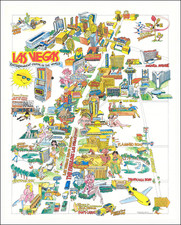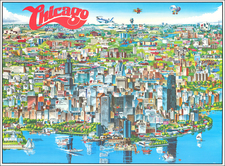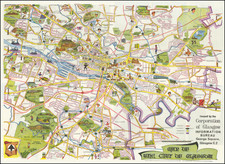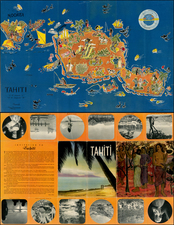Decorative pictorial map of New Zealand, published by the New Zealand Department of Tourist and Publicity in Wellington.
The map is a vibrant and detailed representation of the country's geographical, cultural, and economic aspects. This pictorial map is designed not only to guide tourists but also to showcase New Zealand's diverse attractions, activities, and agricultural industries.
The map itself illustrates both the North and South Islands, highlighting major cities, towns, and geographical features such as mountains, lakes, and rivers. It is adorned with colorful illustrations that represent New Zealand’s key economic activities and attractions, including sheep farming, dairy farming, fruit growing, and timber milling. Recreational activities like snow sports, yachting, and climbing are also depicted, showcasing the country’s rich opportunities for tourism and outdoor adventures.
Additional details provided on the map include key transport routes such as main roads and railways, significant natural landmarks, and main ports which are crucial for understanding New Zealand's connectivity and infrastructure. The highest point marked on the map is Mount Cook at 12,349 feet, emphasizing the country's dramatic topography.
The insets accompanying the map provide a wealth of statistical data and contextual information for the year 1960, encapsulating aspects such as population demographics, with a total population of 2,414,000, including 2,249,000 Europeans and 165,000 Māori. The map details major urban centers, including Auckland, Wellington, Christchurch, and Dunedin, alongside their respective populations and labor force distributions.
Key economic indicators include the birth rate, infant death rate, and life expectancy, providing insight into the health and social conditions of the time. Educational statistics highlight the percentages of children attending primary, secondary, and technical schools, underlining the importance of education in New Zealand society.
The livestock population is enumerated, showcasing the significance of agriculture, particularly sheep, cattle, and dairy cows, to the New Zealand economy. Production values for the year 1959-60 are broken down by sector, including agriculture, pastoral, dairying, mining, and manufacturing, revealing the diverse economic base of the country.
Trade data for 1960 is graphically represented, showing New Zealand's exports and imports, with major commodities such as butter, meat, wool, and cheese. The graphical representation aids in understanding the economic relationships and dependencies of New Zealand with the rest of the world, particularly with countries like the UK, Canada, Australia, and the USA.
The key to map symbols included with the map provides clear explanations for the pictographs used, such as the symbols for different types of farming, industrial activities, and recreational opportunities available in New Zealand.
Overall, this 1962 map serves as a comprehensive visual and statistical snapshot of New Zealand, reflecting its cultural heritage, economic activities, and natural beauty, aimed at both informing residents and attracting tourists.











![[Placerville, California]](https://storage.googleapis.com/raremaps/img/small/63008.jpg)
![[Oranje Freistaat, Transvaal and Kap Kolonie Game Board]](https://storage.googleapis.com/raremaps/img/small/80146.jpg)

